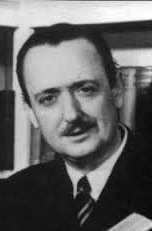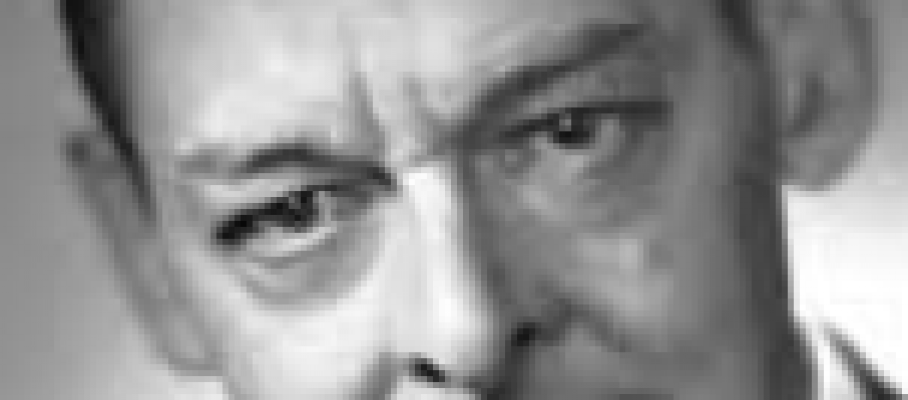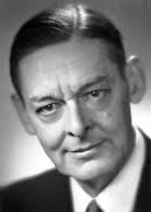The secret life of T S Eliot?
Michael Bartholomew-Biggs considers a literary encounter that might have taken place in 1930s London
Consider the following brief biography: an American-born writer who made a name for himself in the first half of the twentieth century; who spent time in Paris as a student before coming to England; who then found this country so much to his liking that he stayed and married an English wife; and whose subsequent writings were so rooted in Englishness that his US origins were often forgotten by his many admirers. Of the several candidates who might fit this description, the one I wish to single out is the mystery writer John Dickson Carr – often called the master of the “locked room puzzle”. 
Carr’s name is nowadays not as well-known as it once was; but perhaps I can raise his profile again by drawing attention to an intriguing – and, I believe, previously undocumented – possibility that his writing was partly informed by the work of an eminent poet.
One of Carr’s most famous novels, published in the USA in 1935 under the title The Three Coffins, is set in London and introduces the crime scene in the following way:
The street was a bleak canyon, opening into the bleaker canyon of Russell Square…. If you know the telephone box at the north end, just after you pass Keppel Street, you will have seen the house opposite even if you have not noticed it.
Keppel Street no longer emerges into Russell Square, having been cut short by the London University Senate building; but otherwise this description pretty well identifies 24 Russell Square which, in 1935, contained the Faber & Faber offices where T.S. Eliot worked. On its own, this might be mere coincidence, arising from Carr’s attempt to create atmosphere and show off his knowledge of London geography. But if we recall that Eliot’s poem The Hollow Men, has the epigraph A penny for the Old Guy and contains the lines: Let me also wear / Such deliberate disguises / Rat’s coat, crowskin, crossed staves, can we also dismiss it as coincidence that The Three Coffins involves a murderer disguised in a long coat and Guy Fawkes mask? And when we discover that the book was published in Britain with the title The Hollow Man the hypothesis of a Carr-Eliot connection becomes almost irresistible. Nor do the links between poem and thriller stop even here. In Carr’s mystery, some time elapses between the sound of a shot and the discovery of the victim’s body as it choked, rolled over on its side, and lay still. Can we not see this as an artful dramatisation of Not with a bang but a whimper?
Faced with such persuasive evidence, we must ask whether Carr consciously set himself the problem of incorporating elements of Eliot’s poem (published ten years previously) into his own thriller? Is it even possible that Eliot himself had challenged him to do so? As two expatriate Americans in London it is not unlikely that they met each other.
Once we have come this far, it becomes tempting to consider whether Carr might have included (a disguised version of) Eliot as one of the characters in his narrative. And it is arguable that he has indeed done so. A man called Drayman is one of the occupants of the Russell Square house; and while is not a direct portrayal of Eliot (he is much too elderly) some aspects of his background are quite suggestive. He is described as a “broken-down ex-teacher” (Eliot once taught at Highgate School) formerly associated with a university in Paris (Eliot studied at the Sorbonne). We are also told that Drayman is fascinated by the rituals and traditions of Guy Fawkes Day, just as Eliot apparently was when he first arrived in England. Furthermore, Drayman makes the novel’s only reference to poetry when he mentions his failing eyesight and says he can see faces and the morning sky and all those objects which the poets insist blind men should rave about. Is there an intention here to remind alert readers of blind Tiresias in The Waste Land?
The more one looks, the more one finds. One of Drayman’s characteristics is elusiveness: his whereabouts at the time of the murder remain unknown for several chapters; and his eventual contribution to solving the mystery is made from offstage, so to speak, since his evidence is given at second hand. In other words – like Macavity – Drayman is frequently not there. (Although the Old Possum book was not published until 1939, the poems themselves were written at various times in the 1930s, and hence Macavity’s absences could have been well known in literary circles.)
And the more one finds, the deeper one digs. We must now consider the possibility that Carr chose the name Drayman because it also provides a subtle pointer to another Eliot. In chapter 9 of The Mill on the Floss George Eliot – reflecting on young men’s lack of respect for the accumulated wisdom of their seniors – writes It is only when you have mastered a restive horse or thrashed a drayman or have got a gun in your hand that these shy juniors feel you to be a truly admirable and enviable character. Is it so far-fetched to imagine that Carr hoped his readers would detect this buried reference and recognize it as a young thriller-writer’s teasing of an older and more conventional poet?
Investigations should surely not end here. Maybe it is time to re-examine Carr’s numerous other works for signs of Eliot’s influence – or even for evidence of actual collaboration. Carr’s output was so prolific that he also published books under the pseudonym Carter Dickson; and since he appeared to have enough imagination for two people one is entitled to wonder whether another mind and hand might sometimes have provided a little assistance…
[An earlier version of this article appeared in the Bow-Wow Shop]


29/09/2013 @ 23:51
I enjoyed the piece, Mike, but noted another similarity – remove Carr’s moustache and you have a very similar though younger face to Eliot. I don’t know their dates, but is it possible Carr was a son or could he have been another relative?
30/09/2013 @ 10:10
That’s an even bolder suggestion than any of my fanciful speculations! Carr was about 18 years younger than Eliot; but they came from different parts of the USA. Sadly, however, I don’t think there is any evidence to support your conjecture. But there’s always room for further research …
30/09/2013 @ 22:19
Well, I have relatives born and brought up in several states – Virginia, California, Oregon, Pennsylvania, Wisconsin, for starters. And that’s rather typical. Eliot came from St. Louis, Missouri. Where was Carr from?
30/09/2013 @ 22:47
I think it was Uniontown Pennsylvania.